I included an image of Pima Air & Space Museum’s Curtiss F6C-4 Hawk in a recent Air-Minded entry. At the time it was still in restoration, and the photo wasn’t mine. The Hawk is now on display, just inside the main entrance, and I’m able to share some of my own photos:
 |
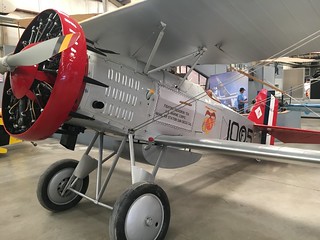 |
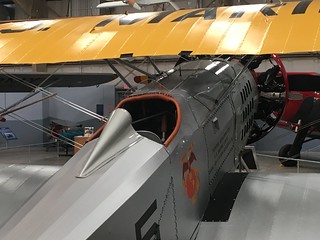 |
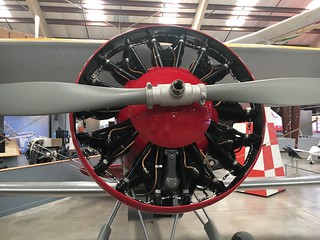 |
The Curtiss F6C Hawk was an interwar carrier- and land-based single-seat fighter. The first Hawks entered Navy service in 1925 and were powered by liquid-cooled V-12 engines, also made by Curtiss. The F6C-4, introduced in 1927, answered the Navy’s desire to shift to air-cooled radial engines for ease of maintenance. Ours is powered by a Pratt & Whitney R-1340. The Navy retired the type in 1930, but the Marines continued to operate it until 1932.
With the addition of the Hawk, PASM now has three pre-WWII warbirds on exhibit. I’m counting the Fleet Model 2 trainer as a warbird, because though it began its career in 1929 as a civilian trainer, a decade later new Army pilots were learning to fly in it. Fleet trainers used a variety of engines; ours is powered by a Kinner K-5 radial. I love the “looped” radius rod on the left landing gear, which strikes me as a simple engineering solution to the problem of strut flex on landing (trainers, as you might guess, are subjected to repeated hard landings, and I’m sure those struts and rods got a workout).
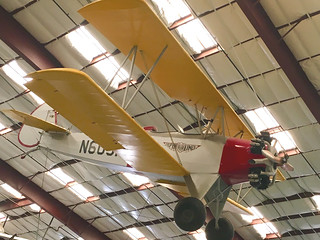 |
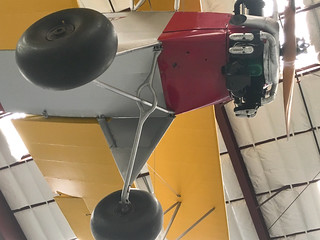 |
PASM’s third interwar aircraft is a bomber, a Douglas B-18B Bolo. The Bolo, a medium bomber based on Douglas’ DC-2 airliner, was operated by the Army from 1937 through the end of WWII. Prior to our entry into the war, the Army considered it a front-line bomber. Bolos were widely deployed overseas and many were destroyed during the Japanese attacks on Pearl Harbor and the Philippines. During the war Bolos were quickly supplanted as bombers by more modern and capable aircraft, and served out the conflict as submarine hunters, transports, and trainers. Ours is a sub-hunter with a specialized radar in the nose.
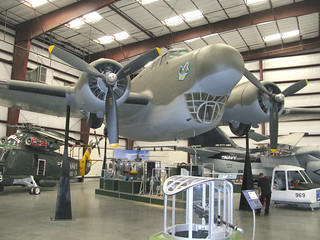 |
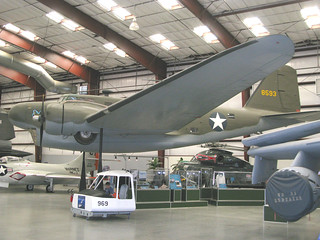 |
Does PASM have any pre-WWII civilian aircraft on display? I’m probably wrong, but I can think of only one, a Sikorsky S-43 Baby Clipper. The Army, Navy, and Marines operated versions of this aircraft in the mid-1930s and beyond, but ours, while wearing the markings of a USMC JRS-1 destroyed by fire in 1942, was actually a civilian aircraft, carrying passengers between the Hawaiian Islands and later, per museum lore, crashed while hauling freight in Alaska.
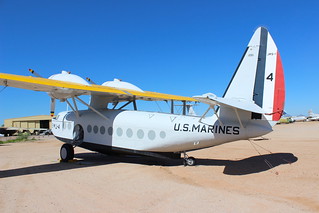 |
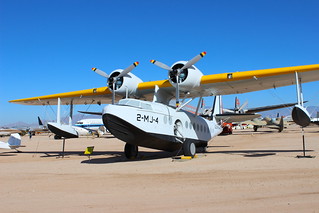 |
I can’t speculate on whether PASM plans to acquire more pre-WWII aircraft, military or civilian. If it does, they’re likely to be replicas, not originals (although museum-quality replicas are exact reproductions of the originals). PASM’s collection of civil and military aircraft from the 1940s through the 1990s is strong, but there are holes here and there, and I know they’re working to plug those.
From the post: “Does PASM have any pre-WWII civilian aircraft on display? I’m probably wrong, but I can think of only one, a Sikorsky S-43 Baby Clipper.”
I was wrong. There’s a Waco RNF (1930) and ZKS-6 (1935), a Boeing PT-17 Kaydet (1935), and a Ryan PT-22 (1935). There are a few other trainers from the 1938-1940 period but I don’t think those qualify as “interwar.”